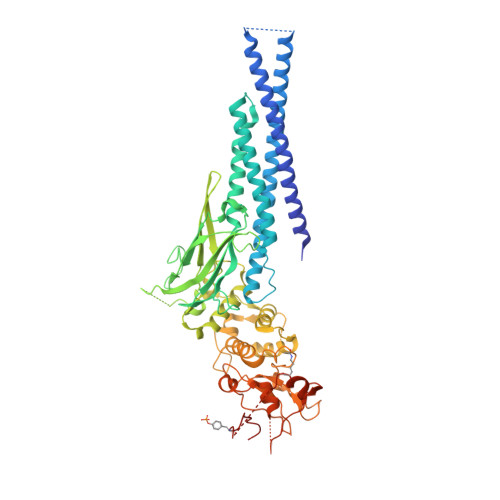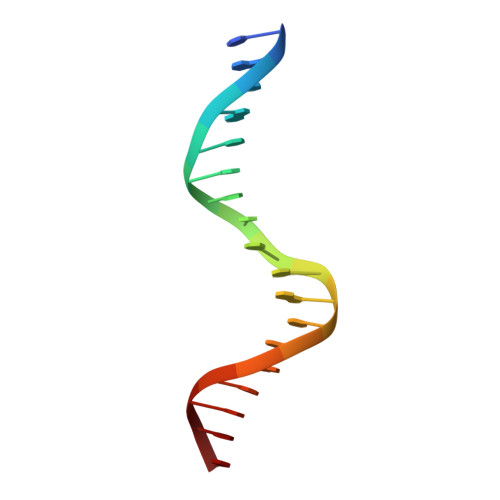Unexpected implications of STAT3 acetylation revealed by genetic encoding of acetyl-lysine.
Belo, Y., Mielko, Z., Nudelman, H., Afek, A., Ben-David, O., Shahar, A., Zarivach, R., Gordan, R., Arbely, E.(2019) Biochim Biophys Acta Gen Subj 1863: 1343-1350
- PubMed: 31170499
- DOI: https://doi.org/10.1016/j.bbagen.2019.05.019
- Primary Citation of Related Structures:
6QHD - PubMed Abstract:
The signal transducer and activator of transcription 3 (STAT3) protein is activated by phosphorylation of a specific tyrosine residue (Tyr705) in response to various extracellular signals. STAT3 activity was also found to be regulated by acetylation of Lys685. However, the molecular mechanism by which Lys685 acetylation affects the transcriptional activity of STAT3 remains elusive. By genetically encoding the co-translational incorporation of acetyl-lysine into position Lys685 and co-expression of STAT3 with the Elk receptor tyrosine kinase, we were able to characterize site-specifically acetylated, and simultaneously acetylated and phosphorylated STAT3. We measured the effect of acetylation on the crystal structure, and DNA binding affinity and specificity of Tyr705-phosphorylated and non-phosphorylated STAT3. In addition, we monitored the deacetylation of acetylated Lys685 by reconstituting the mammalian enzymatic deacetylation reaction in live bacteria. Surprisingly, we found that acetylation, per se, had no effect on the crystal structure, and DNA binding affinity or specificity of STAT3, implying that the previously observed acetylation-dependent transcriptional activity of STAT3 involves an additional cellular component. In addition, we discovered that Tyr705-phosphorylation protects Lys685 from deacetylation in bacteria, providing a new possible explanation for the observed correlation between STAT3 activity and Lys685 acetylation.
- Department of Chemistry, Ben-Gurion University of the Negev, Beer-Sheva 8410501, Israel.
Organizational Affiliation:




















